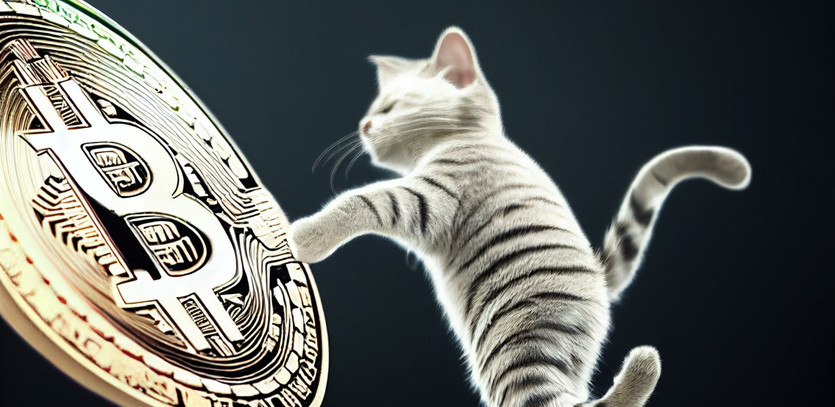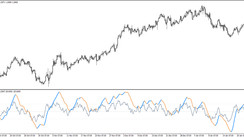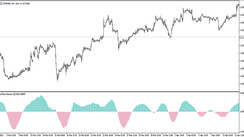Diving into the Dead Cat Bounce Phenomenon
There are moments in the stock market when the pendulum of trading swings dramatically, catching many off-guard and presenting others with potentially profitable situations. One such instance is a peculiar market phenomenon known as the "dead cat bounce." To appreciate how you can monetize it, let's delve into the intricate dynamics of this event.
Imagine a scenario where a stock opens the trading day with a substantial dip - more than 5% compared to its previous closing price - and then continues to spiral downwards. This substantial drop triggers a sense of urgency among investors, initiating the first stage of the dead cat bounce.
As the stock dips by 8%, an unexpected shift occurs: the price begins to rise. Some investors, who might have been contemplating purchasing the shares the previous day, view this as a golden opportunity. They perceive the stock as a bargain, trading at a 5% to 8% discount from its earlier value.
At the same time, day traders who had shorted early that day see this as the perfect moment to cover their short positions. Their actions contribute to fueling the upward momentum of the stock price. As the trading day progresses, the price nearly touches the opening level, but still lags by 5% on the day.
In an unpredictable twist, the stock plunges once more, culminating in the second stage of the dead cat bounce. Investors who had clung to their shares that morning breathe a sigh of relief as they offload their holdings near the opening price.
In essence, the "dead cat bounce" phenomenon involves:
- A significant initial drop in a stock's value
- A temporary and ultimately futile rally
- A subsequent decline, concluding the pattern
Understanding the nuances of this phenomenon can provide keen traders with the insights needed to maximize their profits during such market fluctuations.
Elaborating the Dynamics of a Dead Cat Bounce
The dead cat bounce is an interesting market phenomenon that can be utilized by savvy traders for profitable opportunities. It's a complex, yet predictable pattern that is characterized by four distinct stages. Let's delve deeper into each of these stages:
1. The Startling Drop
The dead cat bounce starts with an unexpected dip at the opening. The key here is a significant percentage decline from the closing price of the previous trading day. In most instances, a 5% drop is considered substantial, but the magnitude could vary depending on the typical performance of the particular stock.
- For a highly volatile stock, a 5% drop may be a common occurrence and not enough to signal a potential dead cat bounce.
- On the other hand, for stable stocks with minimal daily fluctuations, even a 3% to 5% dip can turn heads and pique the interest of observant traders.
2. The Persisting Downward Slide
Following the initial dip, the stock price must continue to tumble for at least five minutes or more after the opening bell. The sustained decline is critical in characterizing a dead cat bounce. If the stock price steadies or rises after the initial gap down, it's not likely to be a dead cat bounce, and thus, it's best to hold off from applying dead-cat-bounce trading strategies in such cases.
3. The Emblematic Bounce
After a sustained fall, the stock begins to rally - this is the bounce that gives this pattern its name. However, it's not just any rally; the stock needs to almost reach the initial gap-down opening price for it to qualify as a 'dead cat bounce'. Here, traders need to exercise both vigilance and flexibility because:
- The price might not match the opening price precisely.
- The bounce may not follow a straight trajectory and might have a few minor drops.
4. The Decline Returns
Post the bounce, the stock takes a second plunge. At this stage, the dead cat bounce has completed its pattern, and traders turn their focus on exit strategies. The resumption of the decline is a crucial indicator that the bounce was indeed a 'dead cat bounce' and not a regular market fluctuation.
These stages together form the life cycle of a dead cat bounce. By understanding these intricacies, traders can strategically position themselves to capitalize on these market movements.
Making the Most of a Dead Cat Bounce: An Expert Guide
Profiting from the dead cat bounce requires a keen understanding of the pattern and astute strategic planning. As a trader, your key weapon here is anticipation, but not in the way you might think. Instead of waiting for the bounce to invest, you prepare for the subsequent drop.
So why would anyone consider going short at this stage? Well, despite the temporary rally, the fundamental issues plaguing the company remain unresolved, and investor confidence remains low.
The fleeting rise in the stock price is seen by many jittery investors as a second chance to unload their shares, leading to another drop in the price. This drop, in turn, creates a perfect opportunity for day traders to short the stock and potentially reap substantial profits.
Identifying Potential Opportunities: The Shorting Strategy
To optimally short a dead cat bounce, keen observation is critical. Watch the price rise back into the vicinity of the opening price. Here, it's important to remember that the region around the opening price may serve as a resistance level, but this is not a strict rule.
The aim is to have the price approach the opening price, but it might either stay below or slightly overshoot. Once the price enters the opening price range, you should be on high alert for initiating a short position.
However, the short position should only be taken once the price starts to descend again. By waiting for this dip after nearing the opening price, you get more confirmation that the event unfolding is indeed a dead cat bounce.
Setting Stop-Losses and Price Targets: Aiming for Maximum Profitability
When trading a dead cat bounce, setting the right stop-losses and price targets is critical to manage risk and ensure potential profitability. Usually, stocks that experience a dead cat bounce may eventually return to their original bounce point.
While no strategy is infallible, if the price respects the open and declines from it, it often retests the low price point before the bounce (the morning low). This point should be your initial price target for the short position, and ideally, you should consider exiting part of the position there.
Should the price start rallying again, you should consider exiting the rest of the position. If it dips below the day's low, retain the remaining position, and exit at the first indication of a rally. Employing a tight trailing stop strategy works well in these circumstances.
When the short position is taken, it's advisable to place a stop-loss order slightly above the recent high before the short position. The stop should ideally be set beyond the reach of normal fluctuations while keeping risks controlled and allowing for a profit potential that outweighs the risk.
Utilizing the Dead Cat Bounce
The key level in a dead-cat-bounce trade usually hovers near the opening price of the original gap-down day. This level often remains significant even in the future, serving as a resistance level until a breakthrough occurs, after which it could become a support level.
Therefore, even if you're not a day trader, paying attention to any dead cat bounces can potentially reveal lucrative swing trading opportunities. Staying alert and understanding the intricate dynamics of the dead cat bounce can be your key to unlock the profits hidden in these market movements.





